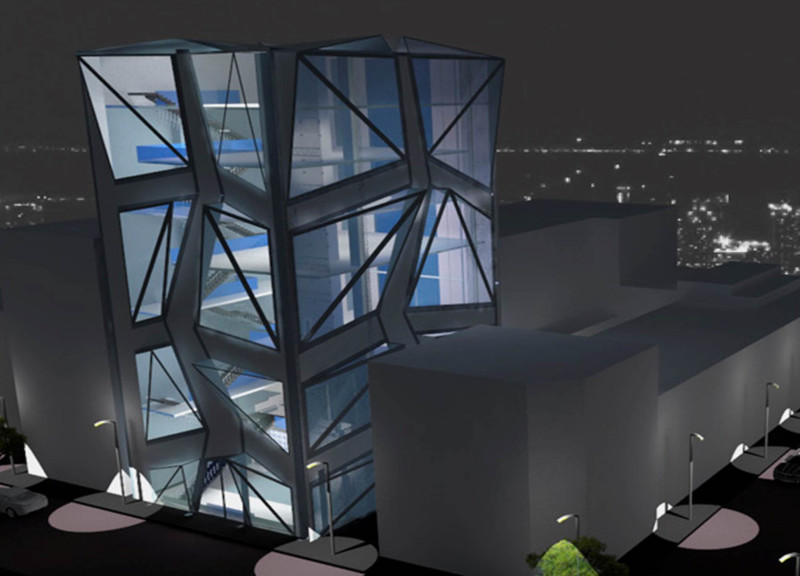5 key facts about this project
The primary function of Casa Blanca Booming Rooms is to serve as a multifunctional venue that fosters interaction among its users. Whether the space is utilized for community gatherings, exhibitions, or meetings, it is designed to accommodate diverse activities while encouraging social engagement. The open-plan layout facilitates fluid movement throughout the interior, allowing users to navigate seamlessly from one area to another without physical barriers. This emphasis on connectivity is a key aspect of the architectural design, promoting a sense of community and collaboration.
The project features a façade composed of a series of angular glass panels that not only enhance the building's visual complexity but also allow natural light to penetrate the interior spaces. This design approach creates a dynamic interplay of light and shadow, transforming the building’s appearance throughout the day and fostering a connection with the outside environment. The glass panels reflect the surrounding urban landscape, thereby integrating the building into its setting while maintaining a distinct architectural identity.
Internally, Casa Blanca Booming Rooms prioritizes open, adaptable spaces that can shift and evolve based on the users' needs. The incorporation of strategically placed staircases promotes vertical circulation while enhancing opportunities for casual interaction. These staircases are designed with minimalistic aesthetics in mind, ensuring they complement the overall design language without overshadowing it. The spacious interiors are anchored by a cohesive material palette that includes concrete, wood, and ceramic tiles, providing a tactile contrast that balances the sleekness of the glass façade.
A unique aspect of this project is its reflective engagement with Moroccan architectural traditions, subtly expressed through color choices and material accents. This thoughtful integration serves to honor the cultural heritage of the region while embracing contemporary architectural techniques. The result is a structure that not only meets modern demands but does so in a way that resonates with local history and identity.
Sustainability is another important consideration in the design of Casa Blanca Booming Rooms. The project employs passive solar strategies, optimizing energy use and reducing its ecological footprint. The careful selection of materials and design elements contributes to energy efficiency, aligning with contemporary principles of responsible design that seek to minimize environmental impact.
For those interested in exploring the intricate details of this architectural project further, reviewing the architectural plans, architectural sections, and various architectural designs will provide deeper insights into the thought processes and ideas that shaped Casa Blanca Booming Rooms. The architectural narrative presented by this project invites readers and visitors alike to consider the powerful relationship between design, space, and community, making it a notable addition to the landscape of Casablanca. The emphasis on user connection, cultural reflection, and sustainable practices positions this project as a deserving subject of further exploration and appreciation.






















